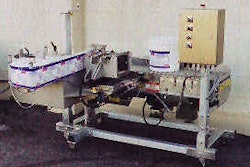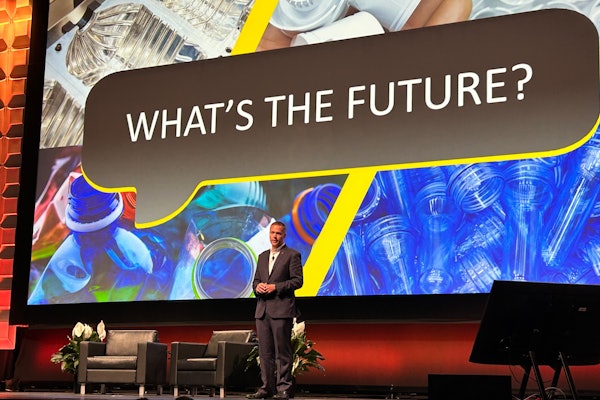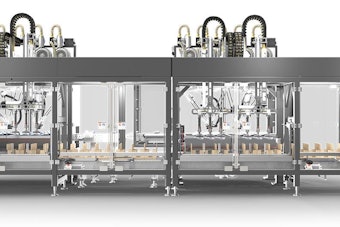In what could be a first step toward modernizing the glass industry with help from the U.S. government, representatives of glass companies met with the U.S. Dept. of Energy's Office of Industrial Technology in Washington, DC, in February. Glass manufacturing is one of seven U.S. industries now working with the Dept. of Energy (DOE) to help develop an industry "vision" for the future, says Denise Swink, deputy assistant secretary of the Office of Industrial Technologies (OIT). At the two-day workshop, glassmakers, public agencies and the research community discussed how to create a blueprint for future research and technology, called Technology Vision and Research Agenda for America's Glass Industry. The document will help to prioritize research and development over the next 20 years, Swink says. "DOE. . . plans to invest in activities that match government's objectives for energy efficiency and environmental performance. We hope to fill in the gaps, helping the glass industry to achieve its vision." Philip Ross, a consultant who contributed to the original draft of that document, set out to define the industry. U.S. glassmakers produced products valued in excess of $15 billion in '91 and employed 120ꯠ workers. "Although glass is an energy intensive industry, significant progress has been made in reducing the amount of energy required to manufacture glass products," he said. "For example, many products are recycled to protect the environment and conserve energy." As stilted and bureaucratic as the title for that document sounds, some of the discussion was decidedly more specific and practical. James R. Malone, president and CEO of Anchor Glass Container Corp. (Tampa, FL), a unit of Vitro in Mexico, offered a far more provocative assessment of what's needed to make glass a more valuable participant in the packaging arena. Malone grew up in the glass business, although today he's actually a relative newcomer to glass company management. Thus he enjoys the freedom to question what has always been considered the tried and true ways of doing business. "The fact of the matter is the way things have always been done when it comes to research and development in the glass industry have not amounted to much," he pointed out. "The facts are that we are shrinking a commodity that has huge economic and environmental benefits." He underscored the need for the workshop, the fact that the glass container industry is in the midst of a long-term crisis. In glass container manufacturing, he explained that 72 plants in the U.S. employ some 40ꯠ people. He updated those recent figures by noting that Anchor Glass Container closed two glass plants the previous week. Economics were the factor, he said. Had the workshop been held in the '80s, the plant closings could have been attributed to lost market share, primarily to lightweight plastics and other package forms. In the '90s, though, glass containers are enjoying increased market share, thanks to new products and a growing public awareness of the advantages of glass. Given these pluses, he said the problem in glass container making is productivity. Or to put it another way, manufacturing costs. With much of American manufacturing showing improved productivity, Malone wonders why the glass industry is lagging. "The answer is fairly plain and simple: research and development energy and dollars have not been used wisely. Or worse, used not at all," he reports. Reducing costs To reverse the flow of plant closings, the glass container industry "must develop technology that would reduce manufacturing costs by a factor of not less than 20 percent," he challenged the gathering. He did cite some government sponsored energy research, but said that it had been limited to cleaner use of energy. With the help of various organizations, he noted that Anchor had recently demonstrated how to correct the control problem of nitrous oxides on a type of furnace used to make glass. Although this was accomplished at a reasonable cost, "it still represents an increase in our operating costs." Overall, research in the glass industry has tended to be reactive, not pro-active. Although it has been responsive to environmental issues, "we face the crisis today of seeing our industry disappear while proudly wearing our 'Good Conduct' medals," Malone stated. "Part of the problem is the lack of resources to conduct the research necessary to be pro-active in attacking problems of productivity and manufacturing. . . In comparison to the plastics industry, we are getting our research and development clock cleaned!" Plastics are made from petroleum products, and those petroleum companies that he calls "Big Oil" have deep pockets. Glassmakers, in turn, have no big sand, big soda ash or big limestone companies to support it. Big Oil companies know that the percentage of their products used for transportation will diminish as consumers and government mandate increased efficiencies. "They know an increasing percentage of their product will go to the manufacture of plastic products, and they are spending their money where their future is," he emphasized. Comparing budgets He explained that the American Plastics Council has spent $40 million over just six months to promote the advantages of plastics to U.S. consumers. In comparison, the Glass Packaging Institute operates on a total annual budget of about $4 million. "That's the total budget, not just the advertising budget!" Malone said. Glass industry R&D reflects the same imbalance. When asked to provide seed money for research by utilities and non-profits, the general response from the glass industry has been to provide facilities and personnel, "but no investment of dollars." Given the glassmakers' lack of initiative in this area, "it will take the development of a public/private partnership to coordinate the research and development that will produce positive payoffs for an industry that is vital to the safe and recyclable delivery of products to the consumer." Here, Malone referred to surplus resources that the U.S. had previously dedicated to R&D for defense now being made available to R&D for domestic productivity, or the so-called "peace dividend." This, he said can be measured not in dollars but in resources, redirecting the great minds who helped develop "smart bombs" into developing "smart processes." First, the glass industry must get its act together-to demonstrate to government that the glass business is worthy of investment in time and funds toward research that improves manufacturing efficiencies. This would have broad reaching payoffs not only for the people employed by glassmakers, but also for consumers. While he admits the workshop can be an important first step, he says he's fearful of "paralysis by analysis." Although he claims not to be a technical expert, three points in the vision document have fired his imagination: * In forming operations, heat transfer from better gob temperature uniformity and control to mold equipment materials and design; * Process information that will identify and correct conditions that will result in efficiency losses. For example, inspection of containers in the Hot End and feed back to operations or robots with corrective measures necessary; * Coatings that will protect, strengthen and provide variety in colors. The collective future of the glass container industry will "depend on our ability to take these and other points. . . and develop a consensus on specific issues to implement. The time has come to adopt a 'Ready, aim and fire' attitude at selected targets of R&D opportunity." No longer does the industry have the luxury of saying, "Ready, aim, aim, aim. . . The viability of an industry that has demonstrated its ability to be a recyclable delivery system will depend on glassmakers' action. "To not take action," he concluded, "will result in our mutual honorable discharge from the ranks of American manufacturing and a chest full of those 'good conduct' medals." Beyond Malone's clarion call, L. David Pye, director of the Center for Glass Research, New York State College of Ceramics at Alfred University, told workshop attendees that he could sense a unifying trend toward priorities. "I believe these priorities include a new, stand-alone classification for glass in materials science-alongside polymers, metals and ceramics-and a need to promote the industry at the national level. Within the glass industry, there is a strong desire to be more competitive as well as a need for more R&D efforts." A revised Technology Vision and Research Agenda for America's Glass Industry will be developed in the wake of this workshop. For details, phone Susanne Leonard at 202/586-6108. c






















